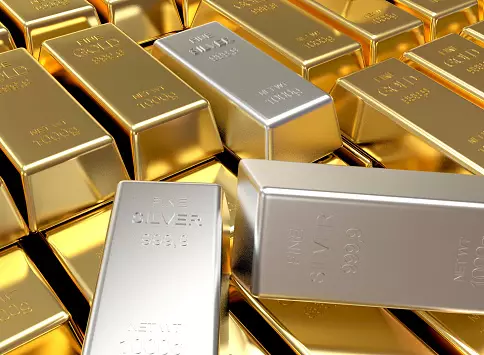In recent weeks, the financial terrain for gold and silver has undergone a dramatic transformation, primarily driven by the reinforced strength of the US dollar. After months of volatility, the dollar’s renewed vigor signals a shift in investor sentiment towards confidence in the U.S. economic outlook. This change casts a long shadow over precious metals, which often serve as a hedge against dollar weakness but now face pressures from the dollar’s ascendancy. The narrative pivots around the Federal Reserve’s recent signals, which appear to reinforce a more hawkish stance—an ironic twist given earlier concerns over the Fed’s independence.
The market’s earlier optimism about metals was partially rooted in a perception of the Fed wavering on interest rate hikes and a looming dovish pivot. But as the recent FOMC meeting indicated a potential return to tighter monetary policy, gold and silver experienced a swift correction. The correlation between the US dollar’s strength and the metals’ decline underscores the fragile balancing act between inflation concerns, Federal Reserve policies, and currency dynamics. While metals previously surged on inflation fears and dovish hints, the tide is turning as the dollar regains dominance, prompting investors to reconsider their positions.
Technical Frontiers: Analyzing the Metals Through the Lens of Price Structures
The technical signals paint a nuanced picture. Gold, after hitting record highs and surpassing psychological barriers, is now showing signs of fatigue on its daily charts. The RSI, a momentum indicator, trending downward suggests that the recent overbought conditions may be replenished by a correction or consolidation. The breaking of the upward trendline indicates a potential pause in the bullish momentum, yet the overall structure still hints at a broader bullish trend that could resume should certain levels hold.
Price levels now operate as critical battlegrounds. On the support side, the long-term pivot zone around $3,620–$3,630 offers an entry point for bulls looking for a rebound, while minor supports at $3,400–$3,450 provide additional safety margins. Conversely, resistance levels are defined around $3,660–$3,675 and the all-time highs near $3,707. These are not mere technical lines but psychological hurdles that can either confirm strength or signal exhaustion. Fibonacci extensions project potential targets up to $3,750–$3,815, hinting that if the current correction stabilizes, gold might challenge recent peaks once more.
Silver’s chart illustrates an equally complex picture. After breaking out of its upward channel, silver encountered resistance at the upper end of its respective timeframe. An evident divergence in the RSI indicates a potential cooldown phase, hinting that the recent surge could be followed by a retest of lower supports. The short-term resistance zone sits around $42, with pivotal support near $39.50–$40. Investors should approach the current resistance with caution, recognizing that an intermediate correction is not only plausible but likely. The key levels of $41.20–$42 form a tight range where momentum oscillates, and a decisive breakout could dictate the next directional move.
The Macro Implication: A Delicate Dance of Confidence and Caution
What does all this technical chatter mean amidst the broader economic landscape? The recent shift suggests a market increasingly attuned to the idea that the US Federal Reserve might be inching back towards tightening policies after a period of seeming indecisiveness. This recalibration dampens short-term enthusiasm for metals which traditionally thrive in environments of inflation or monetary uncertainty. The market’s cautious stance underscores the importance placed on dollar strength as well as the Federal Reserve’s outlook.
However, underlying inflation concerns still persist, setting up a delicate tension. The metals’ recent highs were driven by inflation fears and geopolitical uncertainties—forces that remain unresolved. The potential for the dollar to continue gaining strength and for the Fed to maintain a hawkish tone could further pressurize gold and silver in the near term. Yet, the metals’ innate appeal as safe havens means they remain sensitive to sudden macroeconomic shifts—be it unexpected inflation data, geopolitical flare-ups, or policy surprises.
In essence, the current technical environment paired with macroeconomic signals paints a picture of a market at a crossroads. The metals have displayed resilience but are now susceptible to a correction propelled by dollar strength and shifting Fed narratives. Whether they can hold support levels or are set to retest lower bounds will heavily depend on upcoming economic data, Fed communication, and geopolitical developments.
Ultimately, investors need to be vigilant. The apparent rally and subsequent pullback are not isolated technical phenomena but reflect the larger currents of confidence, uncertainty, and policy stances shaping the global financial landscape. As the dollar regains its footing and the Federal Reserve signals a possible unwinding of previous dovishness, gold and silver face a test of their roles as safe havens and inflation hedges. Only time, data, and market sentiment will determine if their recent highs remain intact or if they retreat further into consolidation—reminding us that nothing in markets is static and that resilience must be paired with prudence.

